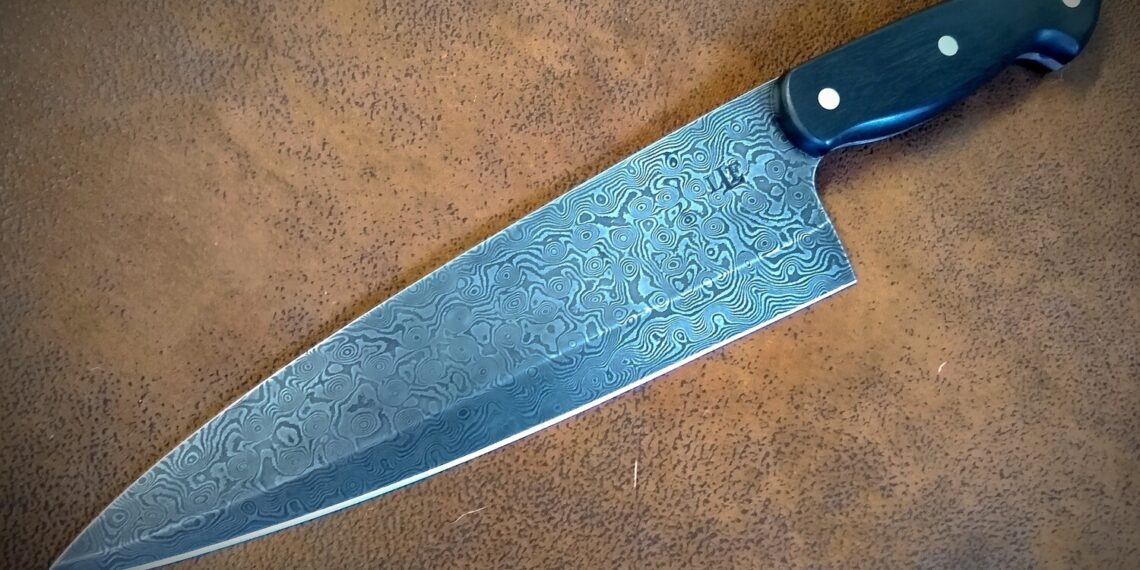Knife making has been a fascinating art since ancient times. The crafting of a perfect blade requires skill, experience, and an eye for detail. For centuries, knife makers have passed down their wisdom and techniques from generation to generation, ensuring that these knives last for many years to come. In this article, we will explore the tools of the trade, how to craft knife handles, and the process of making blades. Whether you are a beginner looking to get started or an experienced crafter looking to hone your skills, this guide will provide all the information you need to create your perfect knife.
Tools of the Trade
For those who have decided to take on the beautiful art of knife making, there are a few essential tools that must be at one’s disposal in order to craft a perfect blade. First, a good-quality, two-foot-long steel bar – preferably of a tool or high-carbon variety – is necessary for forging the blade’s shape. Next, a quenching bath of oil, water, and/or sand provides the blade’s hardening. Additionally, a grinding wheel is essential for sharpening the finished blade. Finally, a steel anvil, a forge, and/or a forge bellows will round out the tools needed for the job.
Before beginning the process of forging a perfect blade, the steel bar needs to be heated in the forge until it’s red-hot. The flames of the forge should be used to heat the bar until it is slightly orange—not so hot that it is glowing bright white. teardrop damascus As soon as the bar is ready, the blacksmith will use a hammer and an anvil to shape the bar into the desired shape of the final product. Keeping the bar super-heated while forging will ensure that the material moves and reshapes easily.
Once the shape has been forged, the blade must be hardened. This is done by placing the blade in either an oil, water, or sand quenching bath. Depending on the type of steel being used, each of these baths will achieve different levels of hardness. After quenching, the blade will be taken out of the bath and slowly cooled, allowing the material to slowly become harder and less brittle.
The next step will be to sharpen the blade. This is typically done using a grinding wheel, which is used to carefully shape the edge of the blade. Once the shape is completed, a fine grit grinding wheel is used to hone the edge to a razor sharp, professional finish.
With the proper tools, anyone interested in the art of knife making can craft a perfect blade. All that’s left is the final finishing touches and the knife-maker’s signature on the blade.
Knife Handles
Once the blade of a knife is complete, the next step in the process is the handle. Crafting a handle for a knife is an art in itself. Careful consideration needs to be taken when selecting a material for the knife handle as it needs to be comfortable to use and also durable enough to last. Popular materials used for knife handles include wood, metal, and polymer. Each material offers different benefits and opportunities for customization. Additionally, it is important to find a material that has good grip and thermal resistance. Furthermore, depending on the type of knife, the handle may require additional components such as pins, guards and spacers. All these components work together to create a well-crafted and unique handle.
Blades
Blades are the heart of a knife and are fundamental to its purpose. To craft the perfect blade for a knife, the maker must have an understanding knife depot of the different types of steel and their properties, as well as the techniques used to shape and temper the metal to the desired specifications. Forging is the process of creating the shape of the blade by hammering heated steel into a mold. Heat treating is the process of heating the blade and quenching it in water or oil. Finally, the tempering process involves reheating the blade to a specific temperature and then cooling it to achieve the desired hardness. With these processes combined, a knife maker can craft a blade with the right blend of strength, flexibility, and edge retention to suit any cutting task.
Conclusion
Knife making is an art that requires an immense amount of skill and dedication. From the selection of the proper tools, to the intricate shaping of knife handles and the crafting of perfectly balanced blades, knife making takes the best of what each craft has to offer and combines them into a timeless and functional masterpiece. As a result, the creation of a perfect blade is no easy feat and requires an incredible amount of time and effort. However, the rewards of knife making can be incredibly satisfying if done successfully, as the perfect knife becomes a practical item you can use and appreciate for years to come. Therefore, if you are looking for a challenging and rewarding hobby and have the time and dedication to see it through, knife making may just be the perfect art form for you.






